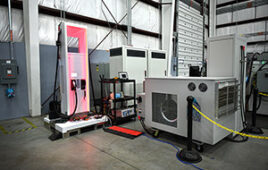Community poverty impacts pre-dialysis care
The wealth or poverty of kidney disease patients’ communities impacts the quality of care patients receive before starting dialysis, according to a study appearing in an upcoming issue of the Journal of the American Society Nephrology (JASN). The results suggest that medical professionals need to improve care for patients who have not yet started dialysis.
For patients with end-stage renal disease (ESRD) who must begin the use of dialysis to do the work their kidneys can no longer do, experts strongly recommend creating an arteriovenous fistula (AVF). An AVF connects a vein and an artery, usually in the forearm, to allow an efficient and convenient connection to a dialysis machine, and to provide a long-lasting site through which blood can be removed and returned.
Research demonstrates substantial variations in the care that kidney disease patients receive before beginning dialysis. William McClellan, MD (Emory University) and his colleagues studied the degree to which AVF use in kidney disease patients is associated with the level of poverty in the county where a treatment center is located.
The investigators studied 28,135 patients who were treated by 1,127 dialysis centers within 16 states between June 1, 2005 and May 31, 2006. They found that among newly identified dialysis patients at treatment centers in poorer communities, patients were less likely to receive an AVF. (Among patients already on dialysis in those centers, AVF rates increased substantially over the 30 months of observation, from 30.9% to 38.6%, and there was no association between a county’s wealth or poverty and the rate of change in AVF use.)
“The community where a treatment center resides may contribute to variations in pre-dialysis care. This observation provides support for developing ways to improve quality of care in these poorly performing communities and raises questions as to why poverty plays a role in pre-dialysis care, when these variations are not seen following the start of dialysis,” said Dr. McClellan.
The study authors suspect that the knowledge of local primary care physicians might vary, leading to delays in referrals for AVF placement. Also, poorer communities might negatively influence opinions, attitudes, and beliefs among individuals with advanced kidney disease about the utility of early AVF surgery.
The lack of community-to-community variation after patients start dialysis may result from support provided the Medicare ESRD program. Medicare reimburses the costs of ESRD care for all individuals eligible for Social Security benefits regardless of other patient characteristics. In Dr. McClellan’s study, improvement in AVF use among patients already on dialysis was measured during a national systematic effort to improve AVF rates through a program called Fistula First.




